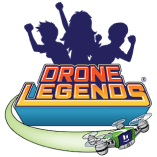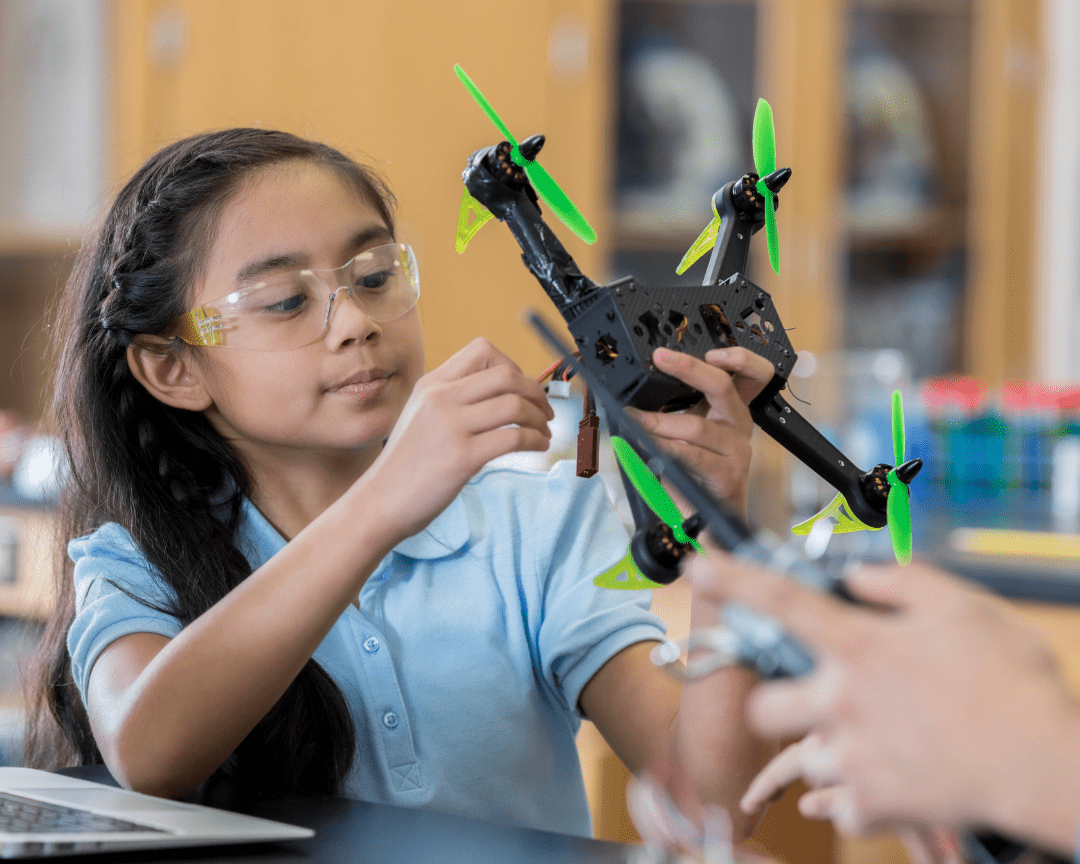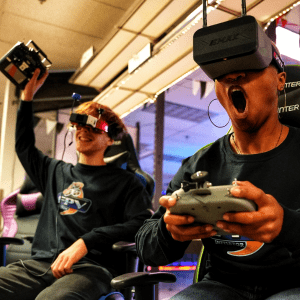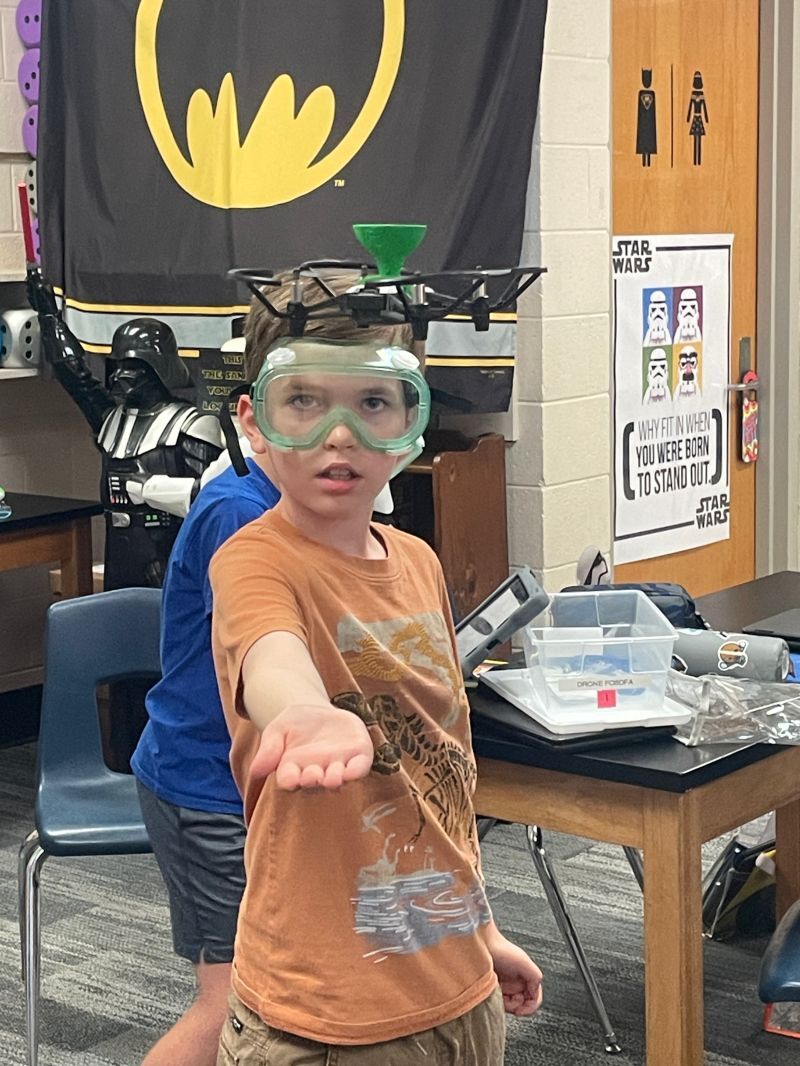By 2026, the drone market in educational environments alone is estimated to grow to $499 million. There’s a huge push happening for drones in education today. If you’re an educator, you likely already know.
Why drones, though? At Drone Legends, we answer this question every day. After working with thousands of teachers around the world— helping schools implement drone technology into classrooms and programs— we’ve seen all the ways drones help students and teachers.
If you’re an educator interested in drones, keep reading. Here’s what you need to know about teaching with drones, particularly for STEM education.
Drone Teacher vs. Teaching Drones
The first thing to note: you don’t have to be a professional drone teacher or even a STEM-savvy educator to teach a class using drones.
While there are plenty of opportunities to learn drone piloting through formal drone instruction programs (yes, even for kids!), drone education doesn’t have to be formalized. Drone training is suitable for someone who wants to become a licensed drone operator, or for those who want to make sure they learn all the FAA regulations when flying a drone.
However, when it comes to learning the basics of drone piloting, almost anyone can learn. Similarly, any type of teacher can adapt to teaching drones in the classroom. While drones are widely used in higher education and universities, many elementary and high school teachers are introducing drones early on.
Elementary Teachers & Drones
Using drones in teaching brings some interesting, engaging dynamics to the classroom. Most notably, students learn hands-on technical skills and gain career-ready knowledge that’s relevant in many STEM fields today.
In elementary drone programs, teachers have noticed:
- More student engagement
- An increased interest in STEM subjects
- Greater social group learning outcomes
- A growing interest in computer science
- Crossover teaching opportunities
Even parents notice the benefits of elementary drone teaching. One parent shared that their kids learned “drone safety, function, application, design, operation and programming” through our drone program. On top of that, kids can use camera drones to learn about aerial videography and photography.
One educator who used the Drone Legends program, Sue, said: “We have been able to offer Drones to the girls on our Reservation. It is a very self-guided program, requiring minimal adult guidance once the students have been taught the basics. Youth have amazed me with the dedication and commitment they have brought to the program. I anticipate improved school attendance and higher testing scores as students continue with the program.”
For 4th through 8th graders, students learn to apply concepts in science, technology, engineering, and math to real-life scenarios. Here’s how.
- Using drones, 4th grade students can define problems and investigate different solutions. They get to practice interpreting challenging equations, conduct group projects following a set of guidelines, and learn about the many ways drones are used in the real world.
- Fifth graders explore cause and effect, learn beginner engineering concepts, and apply evidence-based reasoning to drone missions. They imagine ways to use drones in a storyline, developing creative thinking skills and collaborative participation.
- Drone lessons in 6th grade allow students to build upon their ability to compare and contrast, cite textual sources of their findings, and learn computer languages with coding. They also observe introductory math formulas to measure drone flight paths.
Teachers often find there are ways to use drones to demonstrate nearly any subject, including art, reading, and writing.
Drone Teaching Tips
There are so many ways to teach using drones. It’s easier to do than a lot of teachers think! Here are some tips to teach with drones, for any subject or grade level.
Institute the Right Rules
There are a few rules to keep in mind for recreational and educational drone flight. Educational drones are most often used indoors to avoid breaching state regulations. A classroom, gymnasium, or cafeteria are good areas to set up drone courses.
Teachers must establish the rules and guidelines for students before handing over drones for piloting. For example:
- Pilots should always have a “co-pilot” to help verbally guide the flight path.
- Stay out of the flight zone while drones are being operated.
- Whenever a person is holding or touching a drone before/after a flight, everyone must set drone controllers down.
You can add class rules when teaching your students. But make sure you list out the right rules beforehand so everyone knows what to expect.
Enforce the Rules
Once you have the rules listed out, it’s important to enforce them.
- Have a poster or a digital slide that students can read any time during drone lessons.
- Mark the flight zones with cones or boundary markers.
- Establish a pilot area where students must stand while operating drone controllers.
- Define what responsibilities every drone pilot and co-pilot has.
Explain to students that if they refuse to follow the rules, it puts the group at risk of harm and they’ll have their drone privileges removed. Drones are exciting and fun but they require responsibility to operate and learn from.
Click here to read more classroom management tips when teaching drones to kids!
Assign Roles
Every student, regardless of whether or not they’re flying a drone, has an active role in drone learning. Before delivering drone lessons, assign every student a role.
- Pilot: the person who flies the drone using a remote control.
- Co-pilot: the person who gives verbal cues and encouragement to the pilot, helping them navigate the drone route with ease.
- Observer: the students who watch, form questions, and record results of the drone missions in real-time.
You can create other roles for students that are scenario-based, such as “first responder”, “reporter”, and “drone repair technician.” Keep it fun and involved.
Implement Structure and Flow
Helping students rotate the roles of drone piloting is one way to create structure and flow in the classroom. Other ways to implement structure include:
- Have multiple educators or facilitators present to answer questions and help students fly the drones.
- Time every session so everyone gets a turn to pilot and co-pilot.
- Encourage students to participate by calling on individuals to read sections in the student mission guide or drone handbook.
- Help students record their findings, or share findings as a group so kids can discuss what they saw, experienced, and thought about the drone missions.
- Outsource a team of drone education enthusiasts who can deliver a professional lesson to your class to enhance the drone learning experience.
Have a plan, reach out for help if you need it, and be a good example to students. All these things encourage more structured drone teaching.
Introduce Then Reinforce Ideas
When teaching with drones, introduce the concept of the lesson beforehand. Explain what students will be observing when flying their drones. Then, reinforce what students are learning throughout the drone lesson. You don’t just want to hand a kid a drone and let them fly without an objective!
Using a STEM-backed drone curriculum is a must for teaching drones effectively. Achieve all of these learning tips with the help of a program like Drone Legends.
Teach Drones to Max Out Hands-On Experiences
After a day of sitting and desk-learning, kids want to get up and move around. Drones are great tools to immerse students in fun STEM activities in afterschool programs, enrichment programs, and school clubs.
Any teacher or facilitator can bring an exciting drone learning experience to their class. Whether you’re trained in drone science or completely new to teaching STEM with drones, you are capable of maximizing a hands-on learning experience for kids!
At Drone Legends, we created a program that equips teachers to start teaching with drones right away. Visit dronelegends.com to get started with the most comprehensive drone curriculum available.




